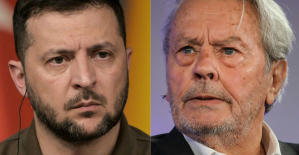You may think what you want of emojis, but: almost certainly each of us has used one at some point. Be it a "thumbs up" or the laughing smiley or the crying emoji - the symbols standardized by the Unicode Consortium make the otherwise dry chat a lot more lively and make communication easier.
Reason enough for the software manufacturer Adobe to take a closer look in an "Emoji Trend Report" in which contexts the approximately 3,633 emojis are actually used - and which of them are well received by the other person. Adobe surveyed around 5,000 US citizens in spring 2022.
But before we delve into the depths of the Unicode cosmos, let’s first get to the bottom of your user behavior:
Still, around 72 percent of respondents from the Adobe survey use the fairly unmistakable emoji when aggressively flirting with someone. No emoji divides the opinion of users as much as the aubergine (for those who didn't realize it before: the vegetable is used as a penis symbol): hated and loved at the same time. Men use it more often than women.
But not only the purple vegetables are not so well received by others in the chat if a man or woman wants to increase their chances of flirting. The poop emoji and angry face also tend to prevent you from wrapping the other person around your finger.
The kissing heart emoji, the smiling heart emoji, and the heart eyes emoji are the three most popular emojis when it comes to flirting. A majority of respondents indicated that they like people who use these three symbols in chat more. The five most used symbols are the smiling face, the thumbs up, the red heart, the ROFL emoji and the crying face.
So pretty universal. In the survey, around 88 percent of US emoji users said they felt more empathy towards someone when they used emoji, while 75 percent were more likely to feel connected to people when their counterpart used emoji. Meanwhile, as many as 92 percent agreed that using emoticons could help them communicate across language barriers.
Like the inverted face, the cherries, or the cowboy emoji. Unfortunately, the trend report does not provide any information on what most people interpret into the emojis. However, about half of those surveyed stated that they used the colorful emojis in a completely different way than their actual meaning anyway.
There are large generational differences: 74 percent of Gen Z users state that they are quite clear about what the emojis actually stand for. Around 65 percent of Millennials say this, with Generation X only 48 percent and with the even older Boomers only 24 percent.
But regardless of whether you know exactly what the symbols actually stand for, they definitely spread a good mood. Around 62 percent of all respondents said that using emojis helped them feel better mentally - and two in five respondents even found that the diversity of emojis helped to overcome social problems and promote more tolerance. Emojis for a better world, so to speak.
By the way, new emojis are added to our chat every year – you can find out which extraordinary symbols made it this time in this article:

 Sydney: Assyrian bishop stabbed, conservative TikToker outspoken on Islam
Sydney: Assyrian bishop stabbed, conservative TikToker outspoken on Islam Torrential rains in Dubai: “The event is so intense that we cannot find analogues in our databases”
Torrential rains in Dubai: “The event is so intense that we cannot find analogues in our databases” Rishi Sunak wants a tobacco-free UK
Rishi Sunak wants a tobacco-free UK In Africa, the number of millionaires will boom over the next ten years
In Africa, the number of millionaires will boom over the next ten years WHO concerned about spread of H5N1 avian flu to new species, including humans
WHO concerned about spread of H5N1 avian flu to new species, including humans New generation mosquito nets prove much more effective against malaria
New generation mosquito nets prove much more effective against malaria Covid-19: everything you need to know about the new vaccination campaign which is starting
Covid-19: everything you need to know about the new vaccination campaign which is starting The best laptops of the moment boast artificial intelligence
The best laptops of the moment boast artificial intelligence Bitcoin halving: what will the planned reduction in emissions from the queen of cryptos change?
Bitcoin halving: what will the planned reduction in emissions from the queen of cryptos change? The Flink home shopping delivery platform will be liquidated in France
The Flink home shopping delivery platform will be liquidated in France Bercy threatens to veto the sale of Biogaran (Servier) to an Indian industrialist
Bercy threatens to veto the sale of Biogaran (Servier) to an Indian industrialist Switch or signaling breakdown, operating incident or catenaries... Do you speak the language of RATP and SNCF?
Switch or signaling breakdown, operating incident or catenaries... Do you speak the language of RATP and SNCF? The main facade of the old Copenhagen Stock Exchange collapsed, two days after the fire started
The main facade of the old Copenhagen Stock Exchange collapsed, two days after the fire started Alain Delon decorated by Ukraine for his support in the conflict against Russia
Alain Delon decorated by Ukraine for his support in the conflict against Russia Who’s Who launches the first edition of its literary prize
Who’s Who launches the first edition of its literary prize Sylvain Amic appointed to the Musée d’Orsay to replace Christophe Leribault
Sylvain Amic appointed to the Musée d’Orsay to replace Christophe Leribault Skoda Kodiaq 2024: a 'beast' plug-in hybrid SUV
Skoda Kodiaq 2024: a 'beast' plug-in hybrid SUV Tesla launches a new Model Y with 600 km of autonomy at a "more accessible price"
Tesla launches a new Model Y with 600 km of autonomy at a "more accessible price" The 10 best-selling cars in March 2024 in Spain: sales fall due to Easter
The 10 best-selling cars in March 2024 in Spain: sales fall due to Easter A private jet company buys more than 100 flying cars
A private jet company buys more than 100 flying cars This is how housing prices have changed in Spain in the last decade
This is how housing prices have changed in Spain in the last decade The home mortgage firm drops 10% in January and interest soars to 3.46%
The home mortgage firm drops 10% in January and interest soars to 3.46% The jewel of the Rocío de Nagüeles urbanization: a dream villa in Marbella
The jewel of the Rocío de Nagüeles urbanization: a dream villa in Marbella Rental prices grow by 7.3% in February: where does it go up and where does it go down?
Rental prices grow by 7.3% in February: where does it go up and where does it go down? With the promise of a “real burst of authority”, Gabriel Attal provokes the ire of the opposition
With the promise of a “real burst of authority”, Gabriel Attal provokes the ire of the opposition Europeans: the schedule of debates to follow between now and June 9
Europeans: the schedule of debates to follow between now and June 9 Europeans: “In France, there is a left and there is a right,” assures Bellamy
Europeans: “In France, there is a left and there is a right,” assures Bellamy During the night of the economy, the right points out the budgetary flaws of the macronie
During the night of the economy, the right points out the budgetary flaws of the macronie These French cities that will boycott the World Cup in Qatar
These French cities that will boycott the World Cup in Qatar Europa Conference League: the semi-final flies to Lille, which loses to the wire against Aston Villa
Europa Conference League: the semi-final flies to Lille, which loses to the wire against Aston Villa Lille-Aston Villa: Cash disgusts Lille, the arbitration too... The tops and the flops
Lille-Aston Villa: Cash disgusts Lille, the arbitration too... The tops and the flops Handball: Les Bleues in the same group as Spain at Euro 2024
Handball: Les Bleues in the same group as Spain at Euro 2024 Europa Conference League: for Létang, Martinez “does not have the attitude of a high-level athlete”
Europa Conference League: for Létang, Martinez “does not have the attitude of a high-level athlete”


















